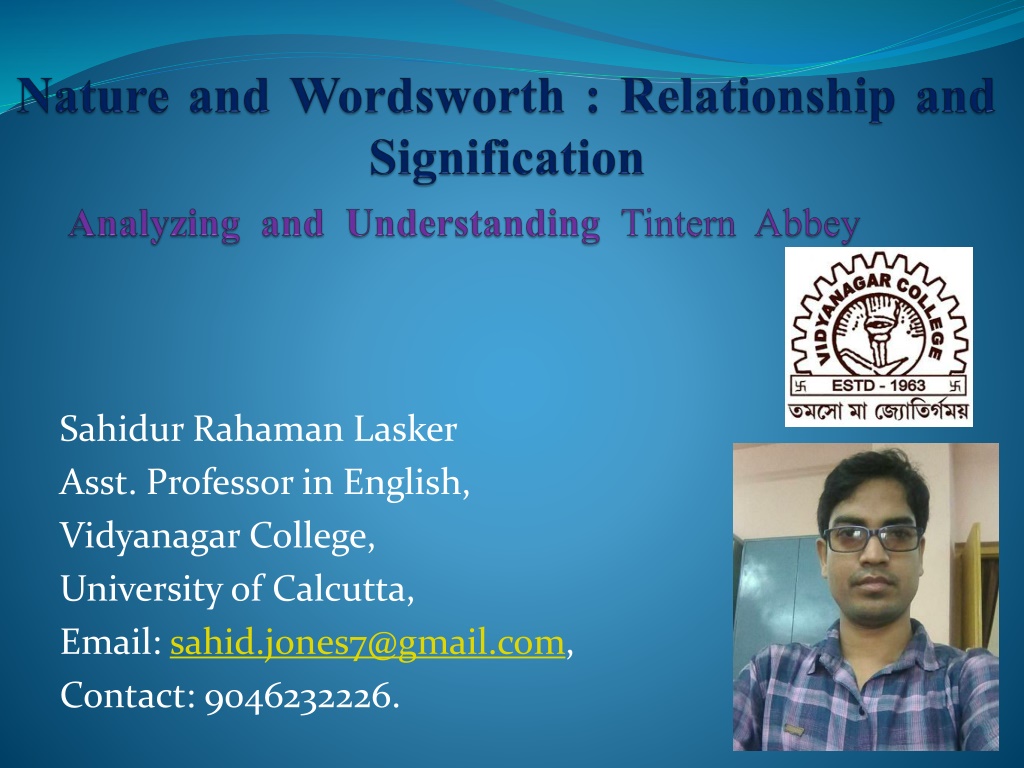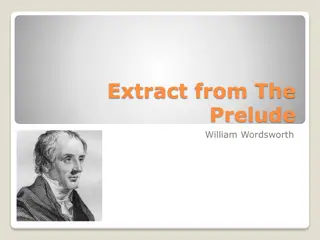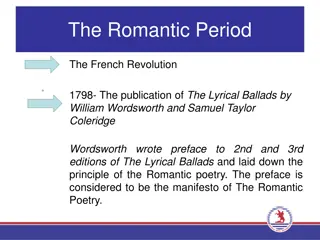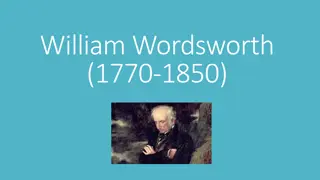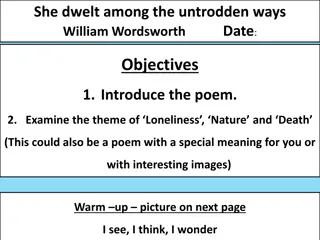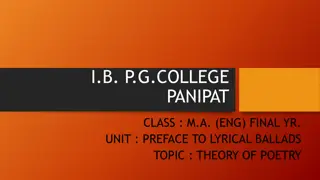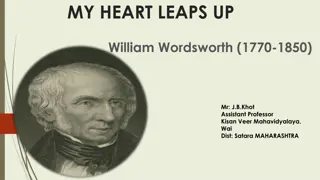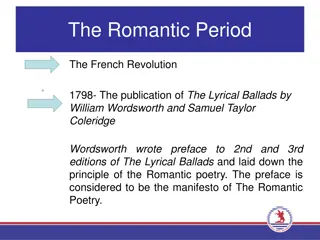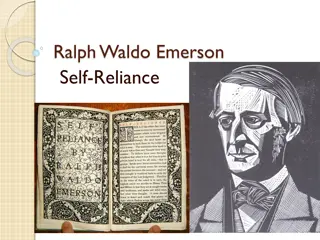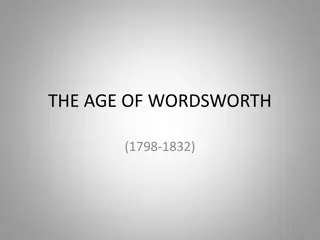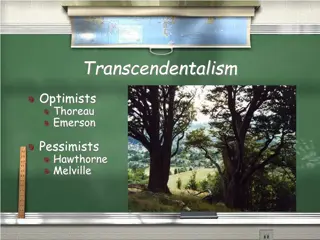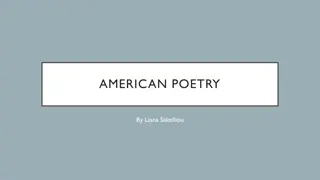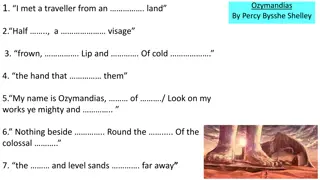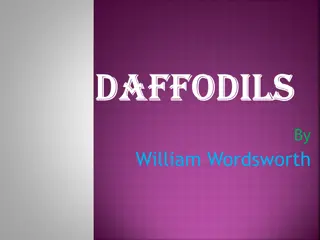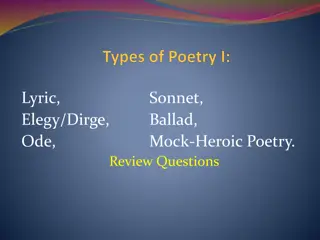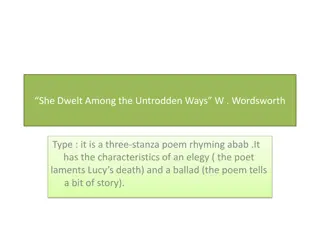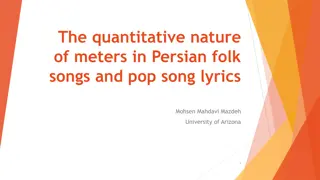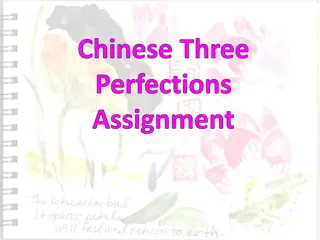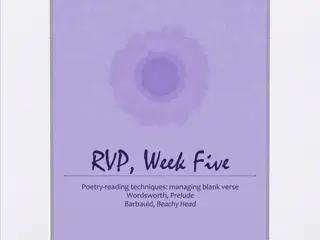Exploring Nature in Poetry: Emerson and Wordsworth Perspectives
Delve into the profound connections between nature and poetry as interpreted by Emerson and Wordsworth. Emerson's transparent eyeball concept and Wordsworth's communion with nature reveal the deep spiritual and philosophical dimensions of the natural world in their works. Themes of unity, harmony, and the sublime beauty of nature are intricately woven into their poetic reflections.
Download Presentation

Please find below an Image/Link to download the presentation.
The content on the website is provided AS IS for your information and personal use only. It may not be sold, licensed, or shared on other websites without obtaining consent from the author. Download presentation by click this link. If you encounter any issues during the download, it is possible that the publisher has removed the file from their server.
E N D
Presentation Transcript
Sahidur Rahaman Lasker Asst. Professor in English, Vidyanagar College, Universityof Calcutta, Email: sahid.jones7@gmail.com, Contact: 9046232226.
Nature and the Poet Emerson and his concept of Nature: I become a transparent eyeball; I am nothing; I see all; the currents of the Universal Being circulate through me. The greatest delight which the fields and woods minister, is the suggestion of an occult relation between man and the vegetable. I am not alone and unacknowledged. They nod to me, and I to them. Nature , in its ministry to man, is not only the material, but is also the process and the result. Nature is the vehicle of thought. Nature as the apparition of God.
Nature and the Poet Wordsworth and his communion with Nature: For him imagination must be subservient to the external world. The world is not dead, but living and has its own soul, which is distinct from that of human s soul. Since nature lifted him out of himself, he sought for a higher state in which its soul and the soul of man should be united in a single harmony. This leads to the understanding of the oneness of the things.
Into the text: Stanza I Findings----- repetition of the adverb again four times Note of seclusion , and its conflating the seclusion of the poet and that of the nature Natural objects never been eschewed by the poet: mountain-springs, cliffs, landscape, sycamore, plot cottage ground, orchard-tufts, unripe fruitspastoral farms Reference to hermit--- who is the hermit and the meaning of fire Morality of mankind set against the everlasting beauty of nature
Into the text: Stanza II A couple of gifts the poet indebted to: sweet sensations, blessed mood A dialectical picture drawing the weariness of the cities and towns against the serenity of nature. Tranquil restoration The motion of our human blood almost suspended We see into the life of things
Into the text: Stanza IV Punctuating conjunction and adverb : And now Memory and recollection Reciprocity between memory and nature Bergson s concept of memory: there is no linked by contiguity with the totality of events which precede and also with those which follow it. Pleasing thoughts are sustainable energies Different stages : boyhood , youth and manhood--- a process of mental and philosophical development. Magnitude of nature : natural objects are projected in grandiose manner. That time is past .. denoting to manhood stage. All pervasive nature and the pantheistic creed of Wordsworth .. Alluding to Upanishad : existence of Brahma recollection which is not
Into the text: Stanza V Moral teaching .. Boat-stealing episode in The Prelude Imparting his sister Dorothy to anchor the beauty of nature in her mind Perhaps Wordsworth is in his yet -to- come old age. He wants the process to continue even after his absence.
Animal Pleasure ( boyhood) Sensuous Pleasure ( youth) Contemplation ( manhood) Moralizing the mind (manhood and laterstage)
